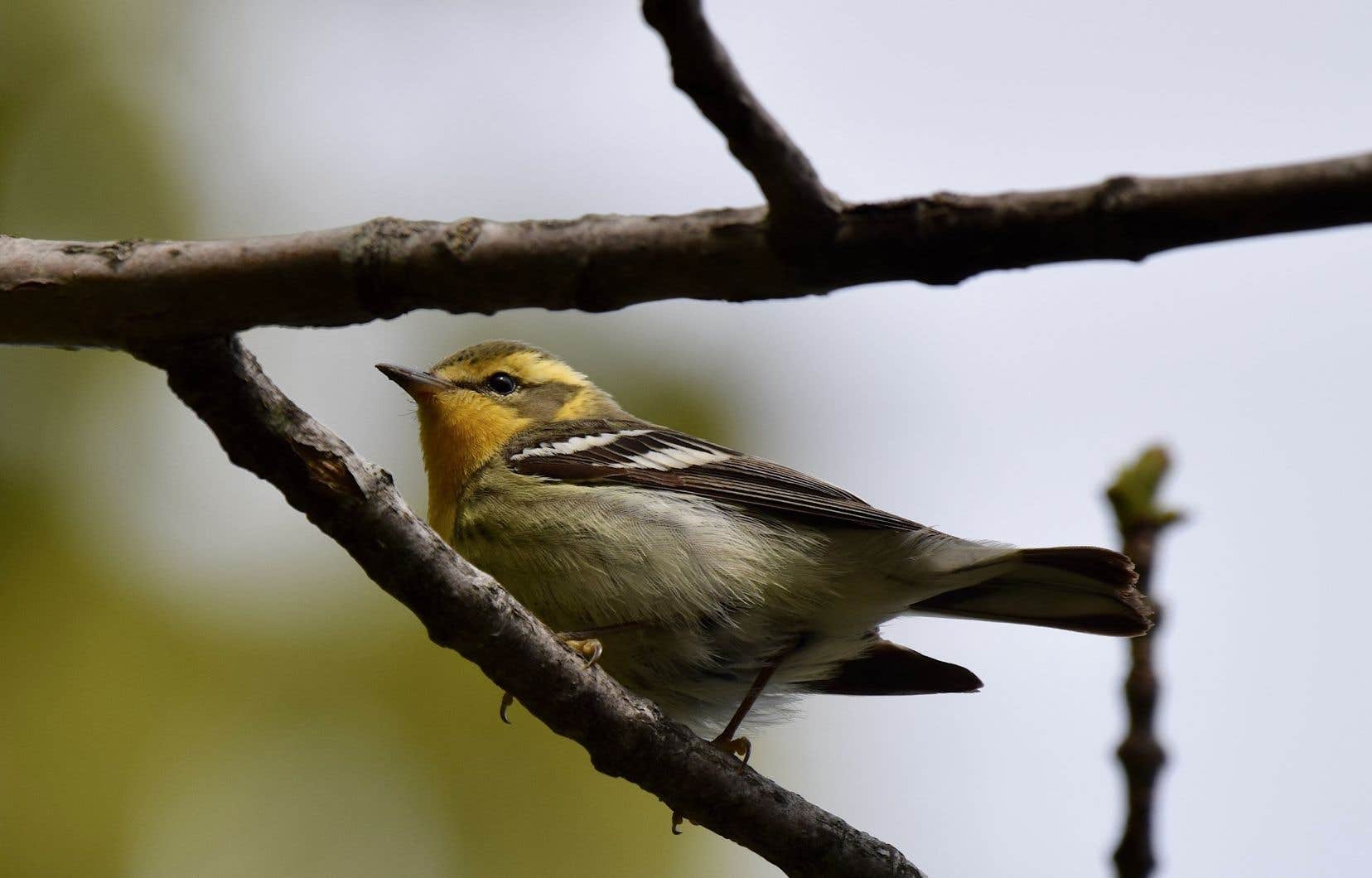Each spring, several species of warblers fly thousands of kilometers from the tropics to nest in Quebec forests. They fascinate observers as they pass, attracted by their very colorful plumages, their diversified songs and their ephemeral presence.
“Warblers are somewhat reminiscent of spring flowers. It is something that is ephemeral, very colorful and that requires being present at the right time. But when we are there on the right day, we have the feeling of being privileged to observe a diversity of birds which arrive directly from the tropics, ”sums up the biologist Samuel Denault, a specialist in avian fauna.
He himself was able to observe 22 species at Parc national d’Oka in a single day last week. “There are one or two days in the year when you can see so many. This is an opportunity to seize,” he said.
Year after year, no less than 29 species of these birds weighing barely a few grams come to nest in the forests of Quebec, some in deciduous stands, but many go as far as the boreal forest, a veritable nursery of birds in America. North. This is particularly the case for the orange-throated warbler, but also for the redstart and the gray-throated warbler, species which are all particularly colorful. The same goes for the Canada warbler, with its hues of blue and yellow.
The great diversity of plumages and songs, but also the fact that the peak of observation is generally limited to the last two weeks of May in the south of the province, arouses enormous enthusiasm among observers. “Ornithologists are waiting for the warblers to return. Right now, everyone who can be outside to observe it is on the ground. This is the group of species that generates the most enthusiasm and their return is an event,” summarizes Jean-Sébastien Guénette, General Manager of Québec Oiseaux.
“They say there are hunting widows in the fall. But I also say that there are widows and widowers of warblers in the spring, because ornithologists will get up at 5 am to go and observe them,” adds Samuel Denault. It’s also the time of year “when the police have to deal with traffic at Point Pelee National Park in southern Ontario because there are a lot of bird watchers coming to see warblers “.
City dwellers can also take advantage of this period to try to observe several species close to home, provided they are attentive to the songs and movements of these fast birds that are not inclined to remain in place.
Warblers can indeed be seen in the heart of urban areas. And in a city like Montreal, green spaces like the Botanical Garden, Jean-Drapeau Park or Mount Royal Park are particularly favorable. “Sometimes in a single small stand of trees, you can see five or six species of warblers. It’s very motivating, because you can note several species in just a few hours of observation,” says Pascal Côté, who is a biologist and ornithologist at the Nature Conservancy of Canada.
Migrations and Threats
Experts on these small birds do not fail to point out that most make impressive migrations to return to Quebec, after spending several months in Central America, even in South America. This is the case of the Blackpoll Warbler. Weighing barely 12 grams, it can winter as far south as Peru. “For many warblers, we are talking about a spring migration of more than 5,000 kilometers to get to Quebec. It’s huge,” emphasizes Pascal Côté.
Spring migrations can also result in massive bird sightings. Last week, in Tadoussac, the ornithologists present calculated that more than 200,000 warblers passed through the dune sector in a single day. It was a “migration correction”, explains Pascal Côté, that is to say “a large-scale diurnal movement to compensate for too great a distance traveled during the night. The birds are then too far north or east of the intended destination”.
Throughout their migrations, but also in their wintering and nesting habitats, warblers also face several threats. The increasingly ubiquitous light pollution indeed disorients these birds, which travel at night and orient themselves with the starry sky and the moon, explains Pascal Côté.
Several also die as a result of collisions in the windows of buildings, and in particular residences, adds Jean-Sébastien Guénette. “We have had several cases reported to us over the past few days,” he said. Not to mention predation by domestic cats, which represents a very serious risk for several species of avian fauna.
The most serious threat, however, is the loss of habitats, explains Michel Leboeuf, science popularizer and responsible for the recent update of the book. Birds of Quebec and the Maritimes. “Warblers live in forest environments. Each species uses specific habitats, which testifies to the richness of ecosystems in Quebec. But many depend on old mature forests, which have become extremely rare in Quebec. Such is the case with the Cerulean Warbler, which is considered “endangered” under Canada’s Species at Risk Act.
All the more reason, according to Mr. Leboeuf, to better protect our forests. The same goes for Mr. Guénette, who has noted for several years the attraction that warblers have for those who discover them. “A lot of people don’t know that you can find such colorful birds here. When they see them for the first time, they are impressed. It is a beautiful gateway to discover the diversity of species that can be observed. »
